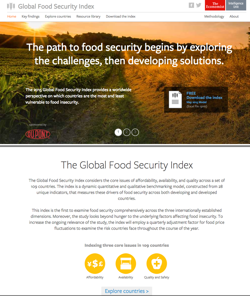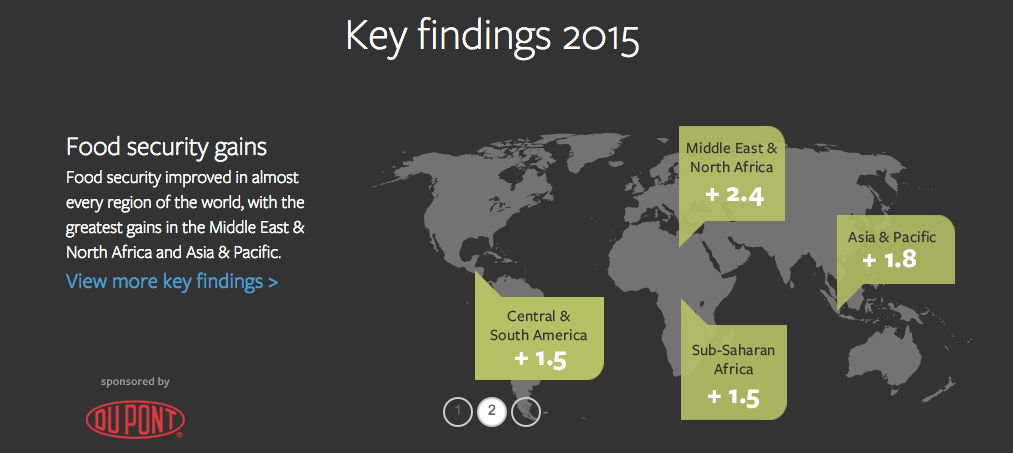During the past year, food security has improved in almost every region of the world, according to the 2015 Global Food Security Index (GFSI), released this week by The Economist Intelligence Unit and Dupont.
Taking into account affordability, availability, and quality across a set of 109 countries, the index measures these drivers of food security across both developing and developed countries.
Among the key findings was the news that two-thirds of countries made progress from a year earlier. Driving the gains were sustained economic expansion in most regions and rapid growth in developing countries (especially in Sub-Saharan Africa—SSA), combined with lower global food prices. Government investments in agriculture and infrastructure—begun in the wake of the food price shocks of 2007-08—have also been crucial to improving food security.
Other key trends uncovered in the GFSI 2015 include:
- High-income countries still dominate the top of the rankings, but lower-middle-income countries made the biggest gains. Collectively, these countries raised their score by 2 points, while low-income countries were next, with a +1.6 point increase. The group of high-income countries rose just 0.1 point, with marginal increases in Availability and Quality & Safety but constraints in Affordability.
- The Middle East & North Africa (MENA) made the largest strides in food security. The 2.4-point increase in the region’s average overall score was driven primarily by gains in Affordability, owing to a combination of lower household spending on food and higher GDP per capita in 83% of countries (10 of 12). Lower levels of food loss and increased access to high-quality protein resulted in marked improvements in the other two categories, Availability and Quality & Safety, as well. The political environment also stabilised in most countries (Yemen is a noteworthy exception, as the intensity of its political crisis has escalated in recent months).
- Europe is the only region that worsened in food security, as scores of 85% of countries fell. The region is complex and is composed of Western European countries and the transition economies in Central and Eastern Europe (26 countries in all). When considered as a separate group, the countries of Western Europe, though they also experienced a slight decline in their food security, outperform all other regions and are the benchmark for good food security practices in advanced economies. Although the availability of food remained constant, progress in reducing food loss and improving physical infrastructure for food systems was more than offset by higher levels of political risk and instability in 11 countries. A fall in urban absorption capacity—a measure of the extent to which the GDP growth rate outpaces the urbanisation rate, and the corresponding ability to support urban growth—was also a constraint.
For full analysis of the state of food security in 2015, according to the Global Food Security Index, visit www.foodsecurityindex.eiu.com




